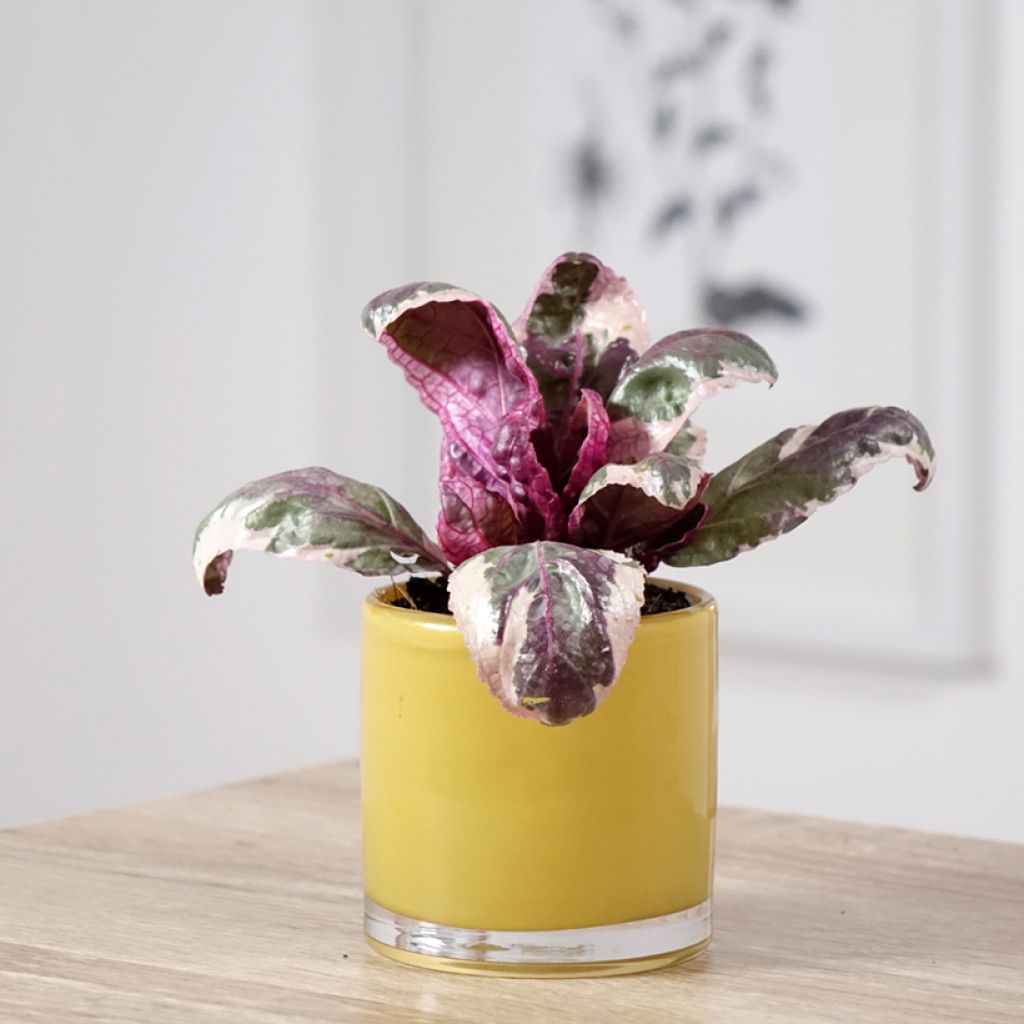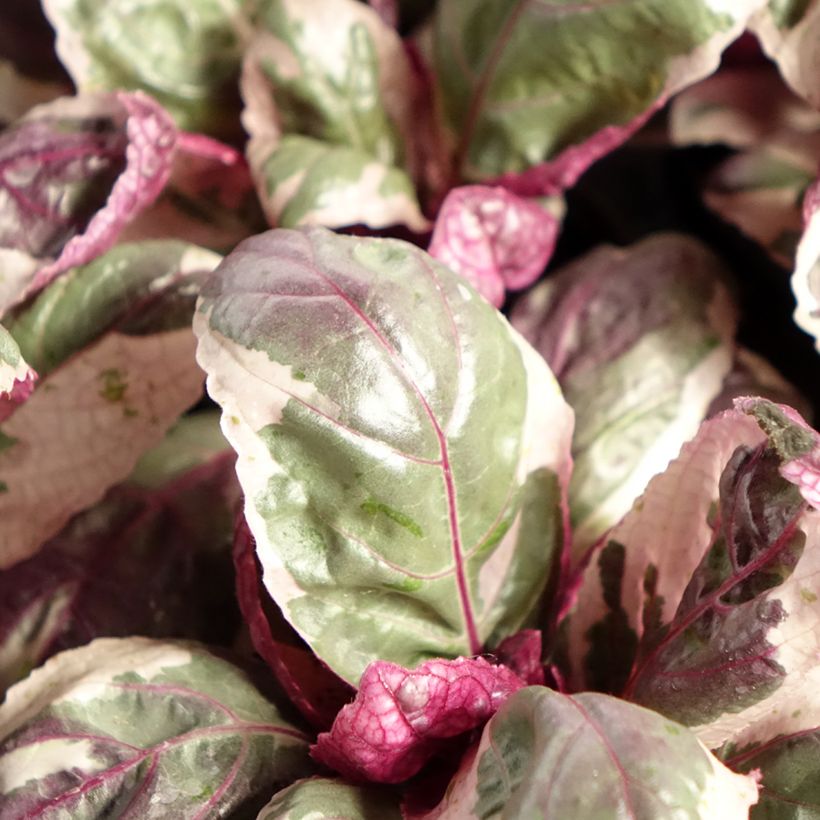

Hemigraphis alternata Snow White - Purple Waffle plant
Hemigraphis alternata Snow White - Purple Waffle plant
Hemigraphis alternata Snow White
Purple Waffle plant
Lovely plant with colorful foliage that catches the eye thanks to its hues... Received last week, so we'll see how it adapts...
Beatrice , 02/06/2025
Special offer!
Receive a €20 voucher for any order over €90 (excluding delivery costs, credit notes, and plastic-free options)!
1- Add your favorite plants to your cart.
2- Once you have reached €90, confirm your order (you can even choose the delivery date!).
3- As soon as your order is shipped, you will receive an email containing your voucher code, valid for 3 months (90 days).
Your voucher is unique and can only be used once, for any order with a minimum value of €20, excluding delivery costs.
Can be combined with other current offers, non-divisible and non-refundable.
Home or relay delivery (depending on size and destination)
Schedule delivery date,
and select date in basket
This plant carries a 30 days recovery warranty
More information
We guarantee the quality of our plants for a full growing cycle, and will replace at our expense any plant that fails to recover under normal climatic and planting conditions.
Description
The Hemigraphis alternata 'Snow White' is a little botanical gem for your home, a rather easy-going pretty plant that makes quite an impression. Its crinkled leaves are painted in beautiful shades of silvery green enhanced by white and pink touches, and reveal a purple underside. This slightly trailing plant will fit perfectly into a modern or exotic décor, whether hung or placed on a shelf. To help it thrive, provide it with soft light, a substrate that stays slightly moist, and a mister within reach to recreate the tropical atmosphere it loves.
The Hemigraphis alternata 'Snow White' is a herbaceous perennial from the Acanthaceae family prized for its decorative foliage. This cultivar is a seedling of the Hemigraphis alternata 'Exotica'. It stands out with its crinkled leaves in shades of light green edged with white and pink, and an intense purple underside. The opposite and ovate leaves typically measure between 5 and 7 cm in length. The plant has a prostrate to trailing habit, reaching a height of 15 to 20 cm and a spread of 30 to 60 cm at maturity. Its growth is rapid, making it an excellent candidate for hanging baskets or as an indoor ground cover. Though subtle, the flowering occurs in summer, with small white bell-shaped flowers measuring less than 2.5 cm clustered in terminal inflorescences.
Native to Southeast Asia, particularly Malaysia, the Hemigraphis alternata species thrives in humid tropical undergrowth sheltered from direct sunlight.
Indoors, this plant prefers fairly bright light, avoiding direct sunlight which could scorch its delicate foliage. High ambient humidity is recommended, with ideal temperatures between 18 and 24 °C. A rich, well-draining substrate kept consistently moist without excess is essential for its development. The Hemigraphis alternata 'Snow White' is not hardy and cannot tolerate temperatures below 10 °C. It is therefore mainly grown indoors in our latitudes where it adds an exotic and colourful touch to plant arrangements. According to some sources, the Hemigraphis alternata may have air-purifying properties helping to improve indoor air quality.
Warning - Note that this plant is considered toxic to pets and humans if ingested, potentially causing gastrointestinal issues.
The Hemigraphis alternata 'Snow White' will brighten up a well-lit living room, bathroom, or conservatory bathed in soft light. This plant excels in a macramé hanger or placed on a natural wood shelf, in a bohemian or Scandinavian setting. In a contemporary interior, place it in a textured ceramic planter for an elegant contrast. This plant pairs harmoniously with the Fittonia albivenis 'White Anne', whose white veins echo its variegation, or a Stromanthe, which complements its purple tones.
Report an error about the product description
Hemigraphis alternata Snow White - Purple Waffle plant in pictures


Foliage
Plant habit
Flowering
Botanical data
Hemigraphis
alternata
Snow White
Acanthaceae
Purple Waffle plant
Southeast Asia
Safety measures
Location
Location
Maintenance and care
Watering tips
Potting advice, substrates and fertilisers
Houseplant care
Disease and pest advice
Maintenance and care
-
, onOrder confirmed
Reply from on Promesse de fleurs
Haven't found what you were looking for?
Hardiness is the lowest winter temperature a plant can endure without suffering serious damage or even dying. However, hardiness is affected by location (a sheltered area, such as a patio), protection (winter cover) and soil type (hardiness is improved by well-drained soil).

Photo Sharing Terms & Conditions
In order to encourage gardeners to interact and share their experiences, Promesse de fleurs offers various media enabling content to be uploaded onto its Site - in particular via the ‘Photo sharing’ module.
The User agrees to refrain from:
- Posting any content that is illegal, prejudicial, insulting, racist, inciteful to hatred, revisionist, contrary to public decency, that infringes on privacy or on the privacy rights of third parties, in particular the publicity rights of persons and goods, intellectual property rights, or the right to privacy.
- Submitting content on behalf of a third party;
- Impersonate the identity of a third party and/or publish any personal information about a third party;
In general, the User undertakes to refrain from any unethical behaviour.
All Content (in particular text, comments, files, images, photos, videos, creative works, etc.), which may be subject to property or intellectual property rights, image or other private rights, shall remain the property of the User, subject to the limited rights granted by the terms of the licence granted by Promesse de fleurs as stated below. Users are at liberty to publish or not to publish such Content on the Site, notably via the ‘Photo Sharing’ facility, and accept that this Content shall be made public and freely accessible, notably on the Internet.
Users further acknowledge, undertake to have ,and guarantee that they hold all necessary rights and permissions to publish such material on the Site, in particular with regard to the legislation in force pertaining to any privacy, property, intellectual property, image, or contractual rights, or rights of any other nature. By publishing such Content on the Site, Users acknowledge accepting full liability as publishers of the Content within the meaning of the law, and grant Promesse de fleurs, free of charge, an inclusive, worldwide licence for the said Content for the entire duration of its publication, including all reproduction, representation, up/downloading, displaying, performing, transmission, and storage rights.
Users also grant permission for their name to be linked to the Content and accept that this link may not always be made available.
By engaging in posting material, Users consent to their Content becoming automatically accessible on the Internet, in particular on other sites and/or blogs and/or web pages of the Promesse de fleurs site, including in particular social pages and the Promesse de fleurs catalogue.
Users may secure the removal of entrusted content free of charge by issuing a simple request via our contact form.
The flowering period indicated on our website applies to countries and regions located in USDA zone 8 (France, the United Kingdom, Ireland, the Netherlands, etc.)
It will vary according to where you live:
- In zones 9 to 10 (Italy, Spain, Greece, etc.), flowering will occur about 2 to 4 weeks earlier.
- In zones 6 to 7 (Germany, Poland, Slovenia, and lower mountainous regions), flowering will be delayed by 2 to 3 weeks.
- In zone 5 (Central Europe, Scandinavia), blooming will be delayed by 3 to 5 weeks.
In temperate climates, pruning of spring-flowering shrubs (forsythia, spireas, etc.) should be done just after flowering.
Pruning of summer-flowering shrubs (Indian Lilac, Perovskia, etc.) can be done in winter or spring.
In cold regions as well as with frost-sensitive plants, avoid pruning too early when severe frosts may still occur.
The planting period indicated on our website applies to countries and regions located in USDA zone 8 (France, United Kingdom, Ireland, Netherlands).
It will vary according to where you live:
- In Mediterranean zones (Marseille, Madrid, Milan, etc.), autumn and winter are the best planting periods.
- In continental zones (Strasbourg, Munich, Vienna, etc.), delay planting by 2 to 3 weeks in spring and bring it forward by 2 to 4 weeks in autumn.
- In mountainous regions (the Alps, Pyrenees, Carpathians, etc.), it is best to plant in late spring (May-June) or late summer (August-September).
The harvesting period indicated on our website applies to countries and regions in USDA zone 8 (France, England, Ireland, the Netherlands).
In colder areas (Scandinavia, Poland, Austria...) fruit and vegetable harvests are likely to be delayed by 3-4 weeks.
In warmer areas (Italy, Spain, Greece, etc.), harvesting will probably take place earlier, depending on weather conditions.
The sowing periods indicated on our website apply to countries and regions within USDA Zone 8 (France, UK, Ireland, Netherlands).
In colder areas (Scandinavia, Poland, Austria...), delay any outdoor sowing by 3-4 weeks, or sow under glass.
In warmer climes (Italy, Spain, Greece, etc.), bring outdoor sowing forward by a few weeks.





























